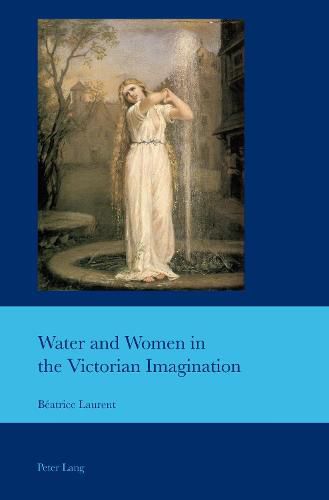Readings Newsletter
Become a Readings Member to make your shopping experience even easier.
Sign in or sign up for free!
You’re not far away from qualifying for FREE standard shipping within Australia
You’ve qualified for FREE standard shipping within Australia
The cart is loading…






This title is printed to order. This book may have been self-published. If so, we cannot guarantee the quality of the content. In the main most books will have gone through the editing process however some may not. We therefore suggest that you be aware of this before ordering this book. If in doubt check either the author or publisher’s details as we are unable to accept any returns unless they are faulty. Please contact us if you have any questions.
During the Victorian period, naturally wet spaces - marshland, rivers and the sea - were construed as feminised loci, articulating contrasted visions of Woman as the angelic Undine or the demonic Siren. This essentialised the concept of feminine fluidity at the same time as it supported the construction of a standard masculinity defined by stability. The conundrum of solidity versus liquidity created a dialectical bond which was often one of subjection: water had to serve matter. It had to be purified, tamed and channelled to become an available and reliable commodity.
The facts, objects, texts of fiction and non-fiction, art and other visual sources presented in this volume may seem to share nothing other than their concerns with water and women in nineteenth-century Britain. Yet, by juxtaposing the figures of Ophelia and the Mermaid, scenes of shipwrecks, accounts of hydrotherapy cures, acts of Parliament on sanitation, and other material, the author argues that these various and apparently unrelated texts converge towards a central mythical figure, the water woman .
$9.00 standard shipping within Australia
FREE standard shipping within Australia for orders over $100.00
Express & International shipping calculated at checkout
This title is printed to order. This book may have been self-published. If so, we cannot guarantee the quality of the content. In the main most books will have gone through the editing process however some may not. We therefore suggest that you be aware of this before ordering this book. If in doubt check either the author or publisher’s details as we are unable to accept any returns unless they are faulty. Please contact us if you have any questions.
During the Victorian period, naturally wet spaces - marshland, rivers and the sea - were construed as feminised loci, articulating contrasted visions of Woman as the angelic Undine or the demonic Siren. This essentialised the concept of feminine fluidity at the same time as it supported the construction of a standard masculinity defined by stability. The conundrum of solidity versus liquidity created a dialectical bond which was often one of subjection: water had to serve matter. It had to be purified, tamed and channelled to become an available and reliable commodity.
The facts, objects, texts of fiction and non-fiction, art and other visual sources presented in this volume may seem to share nothing other than their concerns with water and women in nineteenth-century Britain. Yet, by juxtaposing the figures of Ophelia and the Mermaid, scenes of shipwrecks, accounts of hydrotherapy cures, acts of Parliament on sanitation, and other material, the author argues that these various and apparently unrelated texts converge towards a central mythical figure, the water woman .